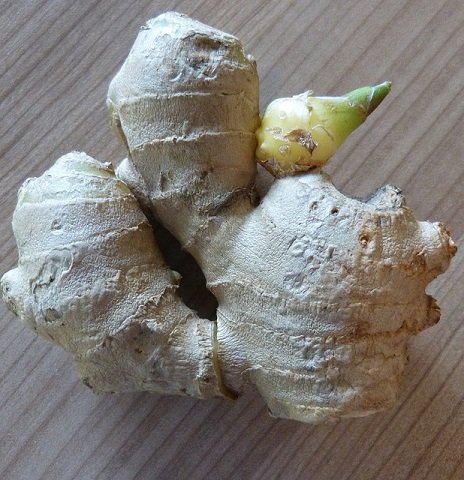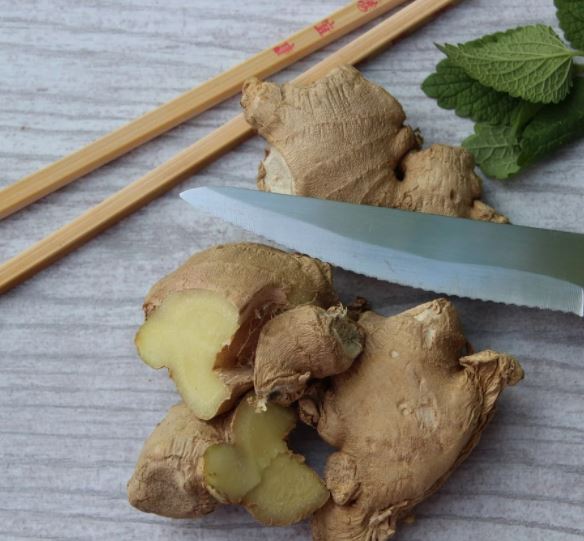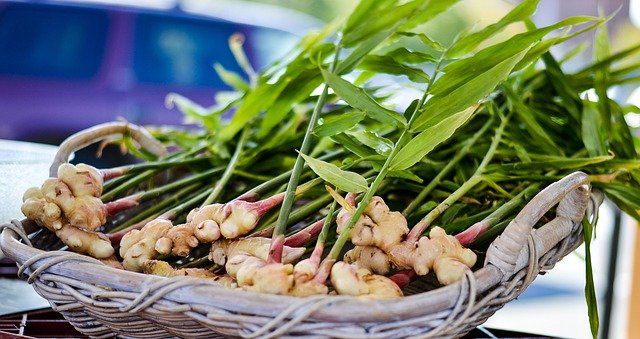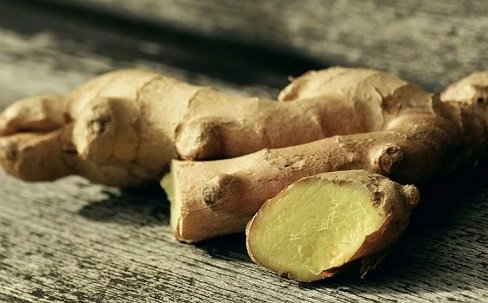Looking to plant Ginger this season? Here is a complete guide having details about growing Ginger.
Ginger plays a significant role in a number of cuisines as well as many natural health remedies that people follow in their daily lives.
What is Ginger?
Edible Ginger (Zingiber officinale) is a root vegetable that is famous for its strong smell and intense gingery taste. It is actually gingerols that give ginger these defining properties.
Ginger is also famous in another area, health. Many health benefits can be accrued by a ginger lifestyle!
Gingerols in Ginger are key to alleviating pain in arthritis patients due to their anti-inflammatory nature. But there’s more, you must have heard that ginger boosts the immune system, and studies have shown this to be true.
Planting your own ginger at home gives you the power to use it any way you want and get a steady supply of it too!
Step by Step Ginger Growing guide
Step 1: Ginger Planting Season
Planting ginger from roots is pretty straightforward forward and you need to just time the season right. This is mostly because ginger is a tropical plant that prefers tropical (warmer) temperatures and sunlight patterns.
The ginger growing period commences after the final spring frost or just before the wet season begins. Ginger is not tolerant to frost, cold, and excessive rainfall and is not likely to show initial growth if you plant them in these seasons.
To grow ginger year-round and harvest the yields, you must be living in a USDA Zone of 9 and higher (USDA Zone 7 and above is passable). This is simply because ginger thrives in warmer temperatures of 50℉ and higher.
Temperatures lower than 50℉ can lead to unfavorable conditions which result in dormancy or death of the ginger. People living in areas of USDA Zone 6 and below can still grow ginger indoors.
Step 2: Select Your Ginger
Just as with garlic, ginger is not grown using seeds. Rather the bulb (rhizome or tuber) is directly used for cultivation purposes. Using healthy ginger tubers from the start makes a great impact on the final harvestable ginger.
You can find ideal ginger bulbs from your local supermarket. We would suggest not to buy ginger from a nursery as it could be an ornamental, inedible ginger variant.
Here are easy tips for ginger selection in supermarkets:

- Pick large ginger rhizomes that have few wrinkles and numerous “eyes”. These eyes are the odd-shaped ends that protrude from the ginger rhizome. These Eyes equate to growth points.
- Take the plump ginger pieces that have green eyes. You can also make them green yourself by soaking them in water overnight. Soaking overnight could help to wear off any growth retardant which is commonly used on store-bought ginger.
Step 3: Prepare the Ginger
Now after selecting the best ginger that will yield the best products, it is time to prepare this ginger. It is not advisable to plant a whole ginger rhizome. Remember, each piece will grow into a completely different plant and provide more ginger for you to use.
You can cut it into pieces to make sure to maximize your ginger output. Make sure you sanitize or sterilize your knife to ensure diseases are not transmitted.

Here are the steps that you can take for preparing the ginger for planting.
- Cut the ginger into 1 inch (2.5 cm) wide pieces to make sure they grow, any smaller, and growth may be meek. Try to make sure that each piece has a minimum of 2 ‘eyes’, with 3 eyes being the most ideal option.
- If you have limited garden space, you can opt to make the pieces bigger. A piece of ginger measuring 1 inch does require a minimum of 8 inches of garden space.
- After cutting the pieces of ginger, place them in a warm dry place. This reduces the high chances of ginger rotting when you plant them.
Step 4: Get Your Soil Ready
In order to offer your ginger rhizome the best possible opportunity to grow, soil quality is paramount.
Ginger loves loose loamy soil with high nutrient values and good drainage. Like other root vegetables, ginger is prone to rotting when grown in water-retaining soil.
An ideal soil for ginger consists of equal portions of garden soil and compost material. This takes care of nutrition as well as water drainage.
You can rectify soil issues by purchasing potting mix if your soil is below par quality. Stay away from soils with high clay composition as they are not the best soils for growing ginger.
Soil pH for Growing Ginger
Another factor to note is that your soil should have a pH between 6.1 and 6.5. Ginger prefers a mildly acidic soil profile for growth.
There are several garden pH kits available in stores that will allow you to test your soil and adjust the acidity levels.
Ginger is not a labor-intensive vegetable and so providing the best soil is important for harvesting a good ginger harvest.
Step 5: Where to Plant Ginger?
For growing ginger, choose a space in the garden that is sheltered from the wind but is still moist (not wet). Also, make sure that you plant your ginger away from any interfering tree roots!
Ginger should not be grown in areas having long periods of full sunlight. You should choose an area of shade that receives only 2 – 5 hours of direct sunlight.
Ginger is a tropical plant meaning it requires warmer temperatures and plenty of moisture. To satisfy this demand and for rhizomes to germinate, soil temperatures should range from 71℉ to 77℉ (22 to 25℃).
In case you live in an area where it is difficult to have these conditions met, you could always try to grow ginger indoors in pots. This offers an easier way to manage soil temperatures, sunlight, and moisture.
Step 6: Plant Your Ginger
After picking out healthy ginger, rich soil, and the location in your garden, there is nothing left to do but plant the ginger.
Depending on how many pieces of ginger you want to grow, spacing should be carefully calculated.
Plant each ginger piece 8 inches apart and 2 – 4 inches deep in the soil with the eyes facing upwards.
The ginger plants will grow to a maximum height of 2 – 3 feet.
To efficiently utilize garden space, invest in companion plants for ginger. These are crops that benefit from ginger or provide benefits to ginger.
Ginger planted in pots has different spacing requirements that you should be aware of. A 14-inch deep container permits for just one piece of ginger.
Step 7: Caring for Ginger Plants
Once you plant the ginger rhizomes, turn your attention to caring for the plants. Ginger usually takes 8 – 10 months before harvesting.
This period involves watering, fertilizing, and mulching. Each of these factors is crucial if you want to reap large healthy ginger rhizomes.
Watering:
Ginger prefers to have moist but not wet soil. Wet soil often leads to rot and decay of ginger rhizomes. Water the ginger in a routine that ensures the soil is never completely dried out and just remains moist.
Fertilizing:
Adding fertilizer to your ginger is optional but in instances where the soil is lacking nutrients, nourishment of nutrients with the help of fertilizer is acceptable. A few drops of a liquid fertilizer is best to increase yield and improve depleting nutrient levels.
Mulching:
Mulching would help you to regulate your soil temperatures, making it more appropriate for growing your ginger. Temperatures dropping below 50℉ call for a layer of mulch.
Additionally, mulch (straw, leaves) can keep weeds at bay.
Step 8: Harvesting Ginger

Ginger is slow-growing, there is not much you can do to speed up the process! It will take a total of 8 to 10 months for ginger to mature.
Luckily, young ginger will be ready for harvest in as short a time as 4 months. Harvest these tender rhizomes gently since their skin can easily become bruised.
To make sure your ginger has a strong intense flavor, you should allow it to mature. Died-down ginger leaves and dry soil are signs of ginger maturity that give you an idea of when to harvest ginger.
Harvesting ginger requires a gentle touch and the use of good judgment (this will come with experience). Using tools roughly around the ginger could lead to damage to the ginger bulbs.
With your hands, feel around the ground to locate the extremities of the ginger. Giving an extra 2-3 inches around every end, dig up the soil to allow enough visibility to pull out the ginger.
FAQs
Yes, you can plant ginger roots from the grocery store.
You might have to soak it for some time to remove the growth retardants that they are usually treated with. As long as this ginger has enough ‘eyes’ or growth points, it should sprout.
In case you plant them and they do not sprout immediately, do not worry, and do not give up! Keep watering the ginger for a minimum of two weeks before you make your decision.
Growing Ginger using ginger rhizomes for propagation takes 8 to 10 months to become ready for Harvest.
Young ginger with thinner peels takes just 4 months until the point it can be harvested and used for any purpose. Of course, it lacks the intense ginger flavor but they can be an option if you cannot wait.
Check out about the Ginger Pests: How do these Insects Affect Your Ginger? Tips to control


